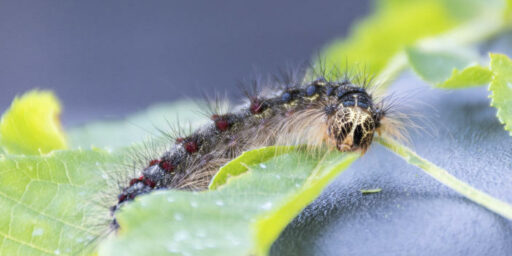Rodent Excreta Pellets
Julian Sanchez found himself “mildly grossed out” to learn that several D.C. area restaurants he’d frequented had been shut down for various health violations, many involving rodents. Despite his general libertarian predisposition, he’s not opposed to regulation in this case for a variety of reasons he sets forth. Matthew Yglesias, who’s not all that libertarian to begin with, agrees. Radley Balko sets forth a classic, yet reasonable, libertarian rebuttal and explains why the free market would actually work here if permitted to do so. Julian responds with a rather long and nuanced reply, still coming out in favor of regulation here.
I don’t have a lot to add to their immediate debate, except to say that I tend to agree with Matt and Julian on this one. While Radley is probably right that a private inspection guild could emerge to perform this function, the loopholes are rather large in a situation where many if not most of the restaurant’s customers are first timers or very infrequent. In my own case, I very seldom think to look for a restaurant’s health rating. This owes to a combination of carelessness on my part, a system that seems to cope with at least low levels of germs reasonably well, and a general assumption that restaurants are clean or they’d go out of business. If I had to rely on private inspection regimes, it would require a much greater degree of either risk acceptance or investment of effort into discerning the credentials of the competing certification firms than I’d prefer to expend. Still, as Radley and his commentators point out, we’re likely living in a sense of false security, given that the number of government inspectors is almost certainly inadequate to the task.
All of which brings to mind the FDA’s “The Food Defect Action Levels,” the example I always used to my amusement and the students’ horror when I taught about bureaucratic regulation in my intro to American Government courses. The basic premise here is that Congress directs bureaucracies to create certain vague conditions (safe food, in this case) and it’s up to the bureaucracies, with their far greater expertise, to figure out how to do it. Because of the necessity for fairness and to achieve systemization–the things we created bureaucracies for to begin with–this inevitably leads to quantifiable standards.
Some semi-random examples from the guidelines follow. They take the form: foodstuff, contaminent/defect, acceptable level.
- APRICOTS, CANNED. Insect filth. Average of 2% or more by count has been damaged or infected by insects.
- BRUSSELS SPROUTS, FROZEN. Insects. Average of 30 or more aphids and/or thrips per 100 grams.
- CINNAMON, GROUND. Insect filth. Average of 400 or more insect fragments per 50 gram; Rodent filth Average of 11 or more rodent hairs per 50 grams.
- MUSHROOMS, CANNED AND DRIED. Insects. Average of over 20 or more maggots of any size per 100 grams of drained mushrooms and proportionate liquid or 15 grams of dried mushrooms.
You get the idea. And, suffice it to say, you don’t even want to know what’s in your chocolate.






I’m with you to an extent; I don’t have a problem with the idea of government inspection of restaurants, but it’s the practice of inspection that’s of concern. I’m from Los Angeles, and there what they found was a huge amount of corruption among inspectors, threatening B or C ratings to restaurant owners who did not bribe them. Inspections also included several standards of compliance that were unrelated to food cleanliness (such as the positioning of “employees must wash their hands” signs; not whether they had them, but the positioning).
Now I know that the government of DC has never had issues with government corruption, but it could be a problem if regulations aren’t written and enforced in a reasonable manner.
Yes, I *do* want to know what’s in my chocolate.
But then I’ll eat about anything that’s not from an avacado.
Every once in a while they publish those guidelines in newspapers. In high school (way back when) we – the geeks – would calculate the bug parts allowed in a Reese’s Peanut Butter cup and post it on the lab room door. Just to help out the candy sales that the Band was conducting don’t you know.
For some reason it was never a deterent – go figure.
On behalf of my brethren, I must take offense, as it is not our fault that the restaurants failed to give us the necessary facilities or to have marked the areas where it was alright to take a crap while foraging for food.
This is not a new problem. Go read George Orwell’s account of filthy Parisian restaurants in ‘Down and Out in Paris and London’. It’s so awful it’s funny.
But this is the kind of thing that we would go mad if we thought about it too hard. I live a privileged life in the American middle class, and I believe that because of that my consumption of insects is at an all-time historical low (much lower than that of the wealthy, or even royalty, in earlier centuries). Not zero, though. Just low. I dig this: it’s a great time/place to be alive.
Here’s one for you: nurses’ watches are sterile. That is, they can’t wash them when they wash their hands–but they do have to wear them to take blood-pressure readings. So they are simply declared sterile.
Sorry Attila Girl – as a former nurse, I can tell you that watches are not declared sterile. And watches are not used to take blood pressure. Second hands are used for pulse and respiration counts. Most nurses wear their watch on their wrist and therefore never have to touch it with their fingers between one patient and the next to take vital signs.
Nurses wash their hands between patients to prevent the spread of germs, but they don’t sterilize their hands. In the operating room, no one wears jewelry – period. You take it all off when you scrub – clocks on the wall with second hands are provided if needed, but mostly equipment in the operating room takes the place of nurses counting. And even after scrubbing (10 minutes per arm, up to the elbow) you aren’t considered sterile, just clean. Then you wear sterile gloves and gown.
Hope that clears things up. *G*
Okey-doke. Got that one second hand, from a friend who knew a friend who is a nurse. Should have asked her myself. I guess I like that on a metaphorical level–I always thought it was comparable to those “postulates” we had to use in math. My interpretation of *those* was: “we don’t know if this is true or not, but we cannot proceed unless we act as if they are.
I’m now waiting for a mathematician to come along and correct me 😉